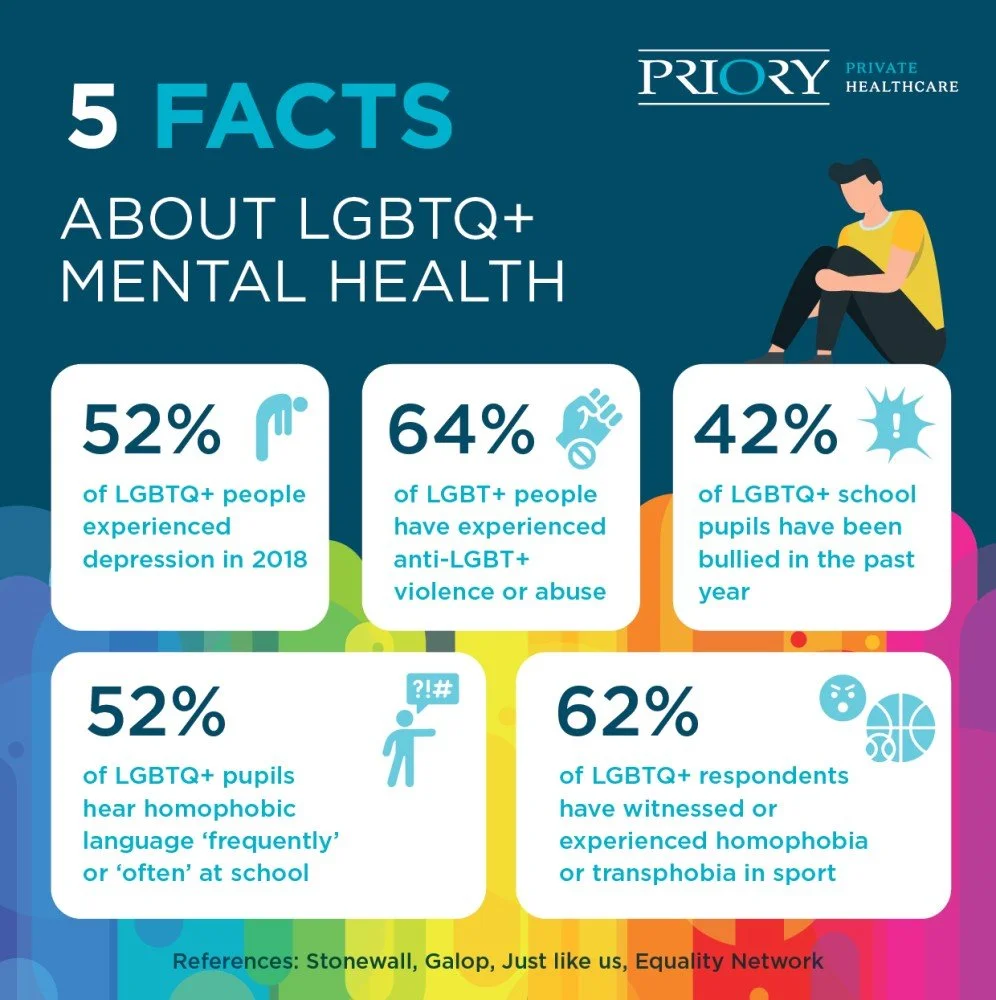More Than a Rainbow Logo: Why Pride Deserves Structural Change.
Introduction
As an LGBTQ+ entrepreneur and founder of a consultancy rooted in people, data, and science, Pride Month offers a moment for reflection, but also a moment to communicate the current challenges in this space. Not just to celebrate visibility, but also to confront the persistent psychological burden placed on queer individuals in the workplace. Many still do not feel safe to bring their full selves to work. Despite strides in diversity, equity, and inclusion (DEI), the workplace remains a source of stress, anxiety, and alienation for many LGBTQ+ people, particularly when performative gestures substitute for real structural change.
Many corporations engage in what’s been often known as “rainbow-washing”, a superficial show of solidarity that grinds to on the 30th June. You may see companies swap to rainbow logos and launch Pride-themed campaigns, even as they continue funding anti-LGBTQ+ causes, remaining silent during legislative attacks, or simply not taking proactive steps to support their queer internal team members. These efforts trade genuine allyship for marketing optics, capitalising on visibility whilst neglecting financial backing, year-round advocacy, or structural change. True support for LGBTQ+ rights must go well beyond Pride-month branding, it demands sustained action rather than seasonal symbolism.
In this article, we draw upon scientific literature and social studies to explore the psychological and physiological toll of non-inclusive workplaces on LGBTQ+ individuals and argue for a more serious, evidence-informed approach to workplace inclusion.
Hidden in Plain Sight: The Data Behind the Silence
According to Stonewall's UK Workplace Equality Index (2022), over 35% of LGBTQ+ employees have hidden their identity at work for fear of discrimination. A systematic review by Colgan et al. (2021) further supports this, noting that concealment of identity often results in elevated stress and reduced job satisfaction. Identity concealment has (not surprisingly!) been found to increase sustained cortisol levels and sympathetic nervous system activity (= our fight-flight survival response), both key indicators of chronic stress in our bodies (Meyer, 2003; Hatzenbuehler, 2009).
The minority stress model (Meyer, 2003) offers a robust psychological framework to understand these experiences. It proposes that stigmatised groups are very much exposed to unique, chronic stressors that accumulate over time, such as discrimination, internalised homophobia/transphobia/queer-discrimination, and identity concealment. These are not minor inconveniences, they have tangible mental (and therefore physical) health implications.
Mental Health and Belonging: A Public Health Crisis
LGBTQ+ individuals are more than twice as likely to experience mental health conditions such as depression and anxiety (Semlyen et al., 2016). This risk increases when social support and community belonging are not available, which is common amongst the community. The UK government found that 25% of trans people had experienced homelessness at some point in their lives; a statistic that lays bare the marginalisation that many in our community face. When the foundational needs of safety, shelter, and dignity are unmet, how can we expect individuals to thrive, let alone bring their full selves to a workplace?
Neuroscientific evidence further underscores the critical role of social connection in emotional regulation and mental health. For instance, Eisenberger and Lieberman (2004) found that social exclusion activates the same brain regions associated with physical pain, suggesting that the pain of exclusion is biologically encoded. This also impairs our ability to make decisions, our judgement, and our working memory, creating an automatic disadvantage for such individuals. Inclusion is therefore not just a moral imperative but a biological necessity. Belonging correlates with decreased amygdala activation (our fear centre) and increased activity in the prefrontal cortex (our centre for executive functioning), suggesting that improved emotional regulation, executive functioning, and decreased fear responses, like anxiety (Coan et al., 2006). When queer individuals experience psychological safety, they are more likely to access their full cognitive capacity for creativity, collaboration, and innovation.
Performative Inclusion vs. Structural Safety
Despite growing DEI efforts, many initiatives remain superficial, limited to Pride campaigns, HR workshops, or simply just changing their logo to a rainbow for one month. However, without changes to workplace culture, policy, and leadership accountability, these superficial efforts we often see risk doing more harm than good, by offering the illusion of support without material follow-through. This approach can come across as ‘tokenistic’ and draws new-recruits into a false sense of security, only to discover later on down the line that they are not as well psychologically supported as the picture was originally painted.
Inclusive leadership, defined by authenticity, empathy, and active allyship in this case, is vital. Research by Nishii (2013) demonstrates that climates of inclusion, where all employees feel valued and respected, predict better individual and team performance and satisfaction.
A Personal Reflection: Queerness as a Catalyst for Change
To my LGBTQIA+ family: if you’ve ever felt the need to self-censor at work, or worried about how colleagues might react to who you are, you're not alone. And you're not wrong to feel cautious. The burden of navigating identity in professional spaces can be exhausting, and it's made heavier by cultures that don't actively foster safety or belonging. That’s why at AMA, we advocate for more than surface-level inclusion, we focus on creating measurable, meaningful change. Through well-being audits, neuro-informed training, and strategic transformation, we aim to move organisations beyond performative allyship and towards cultures where everyone can thrive regardless of identity.
Conclusion
Pride Month is not simply a celebration, but a call to action: to build workplaces and communities where queer people don’t just survive, but thrive. This means moving past symbolic gestures and ensuring systemic change, supported by science, lived experience, and a commitment to structural inclusion. The cost of ignoring this doesn’t just take a toll on inefficiency or missed performance targets, but it chips away at people’s health, dignity, and sense of self. For LGBTQ+ individuals, especially those navigating environments where inclusion is performative rather than lived, the impact is deeply personal and deeply damaging. If companies are serious about equity, well-being, and innovation, they must treat inclusion as a strategic, structural priority. Pride is a commitment to safety, authenticity, and change that lasts well beyond June!
References:
Colgan, F., Hunter, G., McKearney, A., & Wright, T. (2021). LGBT+ workers and the workplace: Diversity, inclusion and exclusion. Equality, Diversity and Inclusion: An International Journal, 40(3), 321-335.
Coan, J. A., Schaefer, H. S., & Davidson, R. J. (2006). Lending a hand: Social regulation of the neural response to threat. Psychological Science, 17(12), 1032-1039.
Eisenberger, N. I., & Lieberman, M. D. (2004). Why rejection hurts: A common neural alarm system for physical and social pain. Trends in Cognitive Sciences, 8(7), 294-300.
Edmondson, A. C., & Lei, Z. (2014). Psychological safety: The history, renaissance, and future of an interpersonal construct. Annual Review of Organizational Psychology and Organizational Behavior, 1(1), 23–43.
Hatzenbuehler, M. L. (2009). How does sexual minority stigma “get under the skin”? A psychological mediation framework. Psychological Bulletin, 135(5), 707–730.
Meyer, I. H. (2003). Prejudice, social stress, and mental health in lesbian, gay, and bisexual populations: Conceptual issues and research evidence. Psychological Bulletin, 129(5), 674–697.
Nishii, L. H. (2013). The benefits of climate for inclusion for gender-diverse groups. Academy of Management Journal, 56(6), 1754–1774.
Semlyen, J., King, M., Varney, J., & Hagger-Johnson, G. (2016). Sexual orientation and symptoms of common mental disorder or low wellbeing: Combined meta-analysis of 12 UK population health surveys. BMC Psychiatry, 16(1), 67.
Stonewall. (2022). LGBT in Britain – Work Report. Retrieved from https://www.stonewall.org.uk



